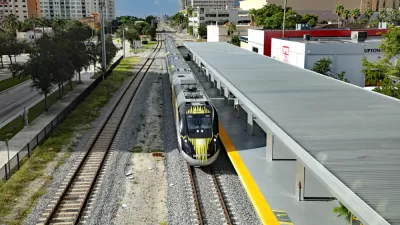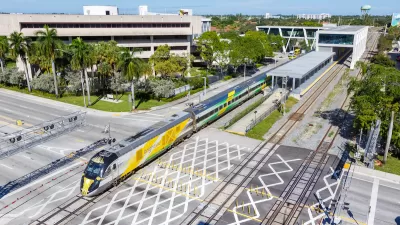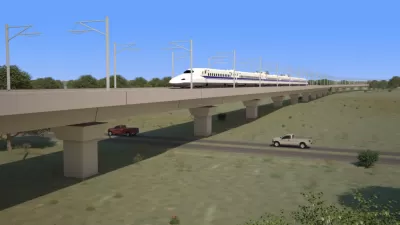Officials from Brightline recently signed an agreement that dictates terms for the study of an extension of the private rail system between Orlando and Tampa.

"Florida transportation authorities on Monday gave Brightline what appears to be a final deadline of mid-summer to iron out agreements with local and state governments for the extension of passenger rail service from Orlando’s airport to Tampa," reports Kevin Spear.
"Brightline’s proposal for rail service between Orlando and Tampa is to follow the company’s completion of an extension to Orlando’s airport, now under construction and more than half finished, from existing service between Miami, Fort Lauderdale and West Palm Beach," adds Spear for an explanation of the scope of the project.
Brightline has been negotiating leases along the route since empowered to the job by the Florida Department of Transportation in 2019, according to Spear, and the state is now pressing the company to wrap it up.
The agreement came with a bunch of other requirements in addition to the expiration date, including the delivery of a study that would quantify the loss of toll revenues for the state and the Central Florida Expressway Authority. (The Brightline extension will require the Central Florida Expressway Authority to vacate space currently devoted to the toll-road system.)
"Both the state and the Central Florida Expressway Authority would need to be compensated for the loss of revenue that may occur from cars being removed from the road if the train service is built," according to another article by Next Miami.
FULL STORY: Florida authorities tell Brightline to lock down Orlando-Tampa passenger-train plan by mid-summer

Planetizen Federal Action Tracker
A weekly monitor of how Trump’s orders and actions are impacting planners and planning in America.

Map: Where Senate Republicans Want to Sell Your Public Lands
For public land advocates, the Senate Republicans’ proposal to sell millions of acres of public land in the West is “the biggest fight of their careers.”

Restaurant Patios Were a Pandemic Win — Why Were They so Hard to Keep?
Social distancing requirements and changes in travel patterns prompted cities to pilot new uses for street and sidewalk space. Then it got complicated.

Platform Pilsner: Vancouver Transit Agency Releases... a Beer?
TransLink will receive a portion of every sale of the four-pack.

Toronto Weighs Cheaper Transit, Parking Hikes for Major Events
Special event rates would take effect during large festivals, sports games and concerts to ‘discourage driving, manage congestion and free up space for transit.”

Berlin to Consider Car-Free Zone Larger Than Manhattan
The area bound by the 22-mile Ringbahn would still allow 12 uses of a private automobile per year per person, and several other exemptions.
Urban Design for Planners 1: Software Tools
This six-course series explores essential urban design concepts using open source software and equips planners with the tools they need to participate fully in the urban design process.
Planning for Universal Design
Learn the tools for implementing Universal Design in planning regulations.
Heyer Gruel & Associates PA
JM Goldson LLC
Custer County Colorado
City of Camden Redevelopment Agency
City of Astoria
Transportation Research & Education Center (TREC) at Portland State University
Camden Redevelopment Agency
City of Claremont
Municipality of Princeton (NJ)





























